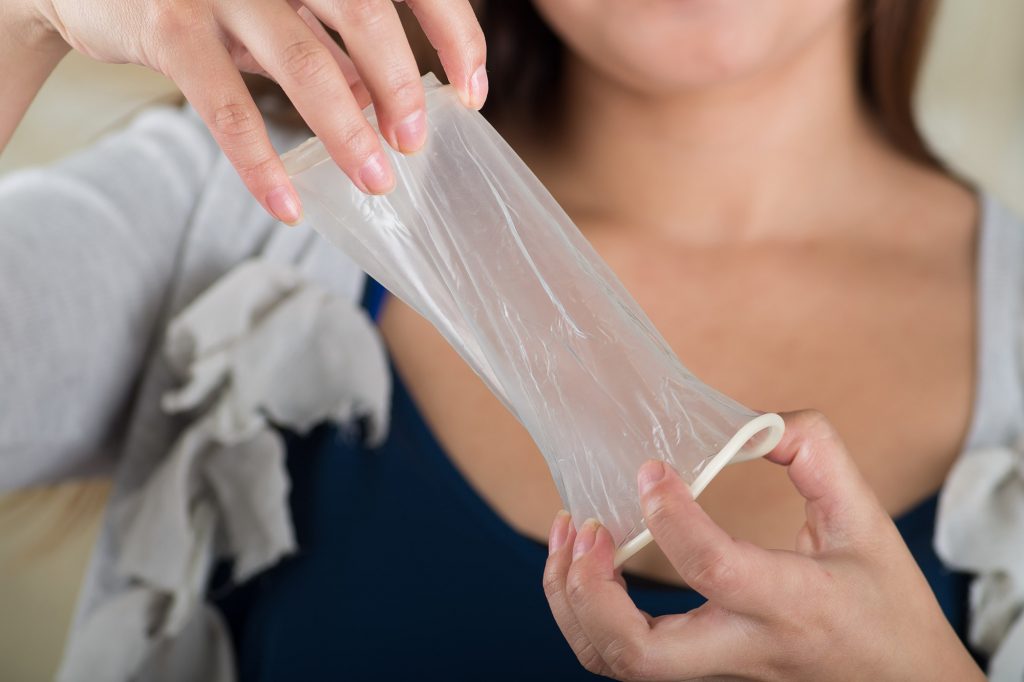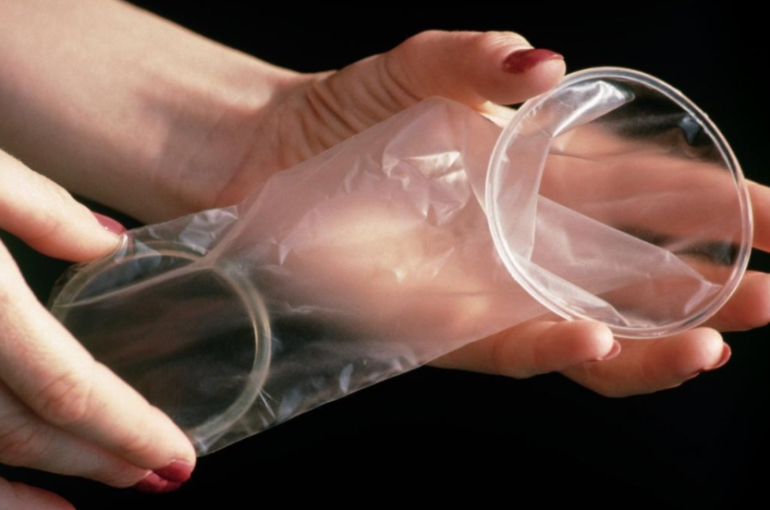-
by admin
Female Condoms
A woman can get pregnant if a man’s sperm reaches one of her eggs (ova). Contraception tries to stop this from happening by keeping the egg and sperm apart or by stopping egg production. One method of contraception is the female condom.
Female condoms are made from thin, soft plastic called polyurethane (some male condoms are made from this too). Female condoms are worn inside the vagina to prevent semen from getting to the womb.
When used correctly during vaginal sex, they help to protect against pregnancy and sexually transmitted infections (STIs), including. Condoms are the only contraception that protects against pregnancy and STIs.

At a glance: facts about the female condom
- If used correctly and consistently, female condoms are 95% effective. This means that five out of 100 women using female condoms as contraception will become pregnant in a year.
- Using female condoms protects against both pregnancy and STIs, including HIV.
- A female condom needs to be placed inside the vagina before there is any contact between the vagina and the penis.
- Female condoms need to be stored in places that aren’t too hot or too cold, and away from sharp or rough surfaces that could tear them or wear them away.
- Always buy condoms that have the CE mark on the packet. This means they’ve been tested to European safety standards.
- A female condom can get pushed too far into the vagina, but it’s easy to remove it yourself.
- Female condoms may not be suitable for women who are not comfortable touching their genital area.
- Do not use a female condom more than once. If you have sex again, use a new female condom.

How female condoms work
The female condom is worn inside the vagina to stop sperm from getting to the womb.
It is important to use condoms correctly and to make sure the penis doesn’t make contact with the vagina before a condom has been put in. This is because semen can come out of the penis before a man has fully ejaculated (come). A female condom can be put in up to eight hours before sex.
How to use a female condom
- Take the female condom out of the packet, taking care not to tear the condom – do not open the packet with your teeth.
- Squeeze the smaller ring at the closed end of the condom and insert it into the vagina.
- Make sure that the large ring at the open end of the female condom covers the area around the vaginal opening.
- Make sure the penis enters into the female condom, not between the condom and the side of the vagina.
- Remove the female condom immediately after sex by gently pulling it out – you can twist the large ring to prevent semen leaking out.
- Throw the condom away in a bin, not down the toilet.
Who can use female condoms?
Most people can safely use condoms. However, they may not be the most suitable method of contraception for women who do not feel comfortable touching their genital area.
Advantages and disadvantages of female condoms
It’s important to consider which form of contraception is right for you and your partner. Take care to use condoms correctly, and consider using other forms of contraception for extra protection.
Advantages
- Female condoms help to protect against many STIs, including HIV.
- When used correctly and consistently, condoms are a reliable method of preventing pregnancy.
- You only need to use them when you have sex – they do not need advance preparation and are suitable for unplanned sex.
- In most cases, there are no medical side effects from using condoms.
- Female condoms can be inserted up to eight hours before sex, and mean that women share the responsibility for using condoms with their partner.
- Any kind of lubricant can be used with female polyurethane condoms.
Disadvantages
- Some couples find that putting a condom in can interrupt sex – to get around this, try making using a condom part of foreplay or insert the female condom in advance.
- Condoms are very strong, but may split or tear if not used properly.
- Female condoms are not as widely available as male condoms and are more expensive to buy.
Can anything make condoms less effective?
Sperm can sometimes get into the vagina during sex, even when using a condom. This may happen if:
- the penis touches the area around the vagina before a condom is put in
- the female condom gets pushed too far into the vagina
- the man’s penis enters the vagina outside the female condom by mistake
- the condom gets damaged by sharp fingernails or jewellery
Although female condoms (when used correctly) offer reliable protection against pregnancy, using an additional method of contraception will protect you against pregnancy if the female condom fails. If a female condom slips or fails, you can use emergency contraception to help to prevent pregnancy.
If you’ve been at risk of unintended pregnancy, you’re also at risk of catching an STI, so have a check-up at:
- a GP surgery
- a local sexual health clinic